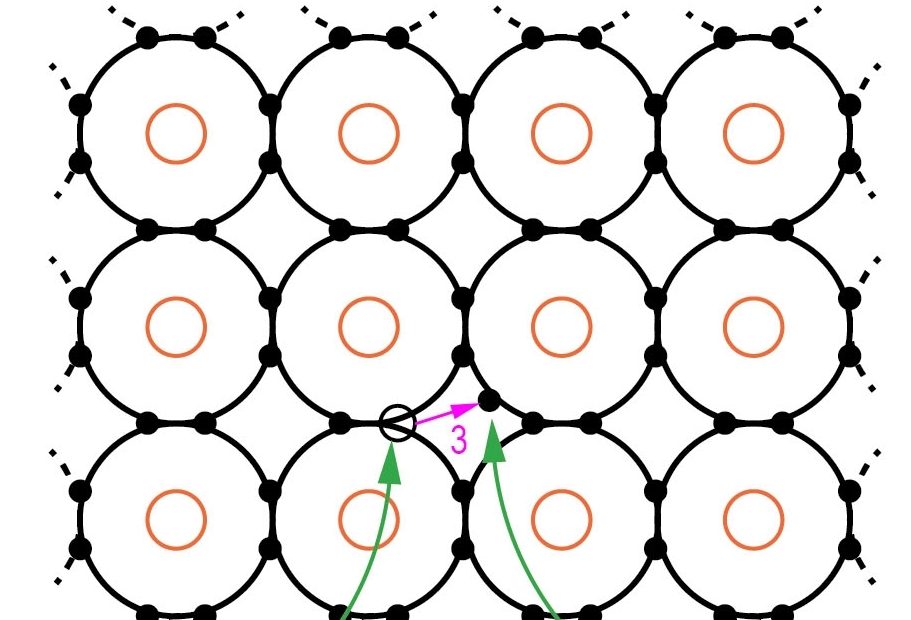In new LEDs, light is produced by the radiative decay of exciton complexes in layers only a few atoms thick. Let’s consider everything in order.
Electrons and holes:
In a semiconductor material, electric charge can be transferred in two different ways. On the one hand, electrons can move straight through the material from atom to atom, in which case they take on a negative charge. On the other hand, if an electron disappears (passes) somewhere in a semiconductor, that point will be positively charged and will be called a “hole”. If an electron moves up from a neighboring atom and fills the hole, it in turn leaves the hole in its previous position. Thus, holes can move through a material like electrons, but in the opposite direction.
Under certain circumstances, holes and electrons can bond with each other. Just as an electron revolves around a positively charged atomic nucleus in a hydrogen atom, an electron can revolve around a positively charged hole in a solid object.
Even more complex bond states are possible: the so-called trions, biexcitons, or quintons, in which three, four, or five coupled elements participate.
Exciton:
The formation of an exciton can be represented as follows: when light is absorbed, an electron from one energy level (or band) passes to a higher one, leaving a positively charged hole at the initial level (band), with which it is bound by Coulomb attraction. An exciton is a bound state of an electron and a hole.
An exciton (from the Latin excito, I excite) is a quasi-particle corresponding to an electronic excitation that migrates through a crystal, but is not associated with the transfer of electric charge and mass.

a) The usual state of a hole (1).
b) 3-electron transition(2) and appearance
Two-dimensional layers:
In most solids, such bonding states are possible only at extremely low temperatures. However, the situation is different with so-called “two-dimensional materials”, which consist only of thin layers of atoms. A team from the Technical University of Vienna has created a cleverly designed sandwich structure in which a thin layer of tungsten diselenide or tungsten disulphide is sandwiched between two layers of boron nitride. An electrical charge acts on this ultra-thin layer system using graphene electrodes.
In such two-dimensional layered systems, excitons have a much higher binding energy than in ordinary solids and are therefore much more stable. Simple bond states consisting of electrons and holes can be demonstrated even at room temperature. Large exciton complexes can be detected at low temperatures.
Various exciton complexes can be obtained depending on how the system is supplied with electrical energy using short voltage pulses. When these complexes break down, they release energy in the form of light, which is how the newly developed layer system works like an LED.
According to the researchers themselves and the authors of the project, the system of light layers not only provides an excellent opportunity to study excitons, but is also an innovative light source. Now there is an LED, the wavelength of which can be easily influenced by changing the shape of the applied electrical impulse.
Based on an article from the Internet edition of LED Professional
